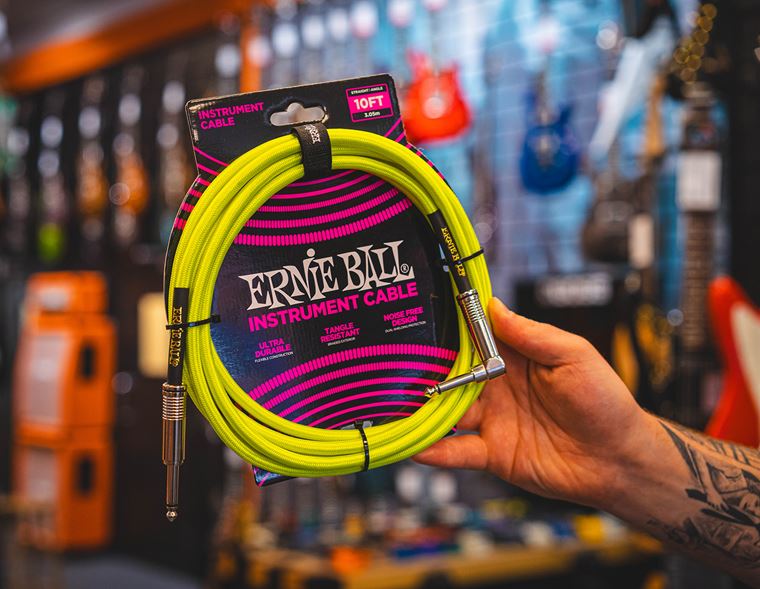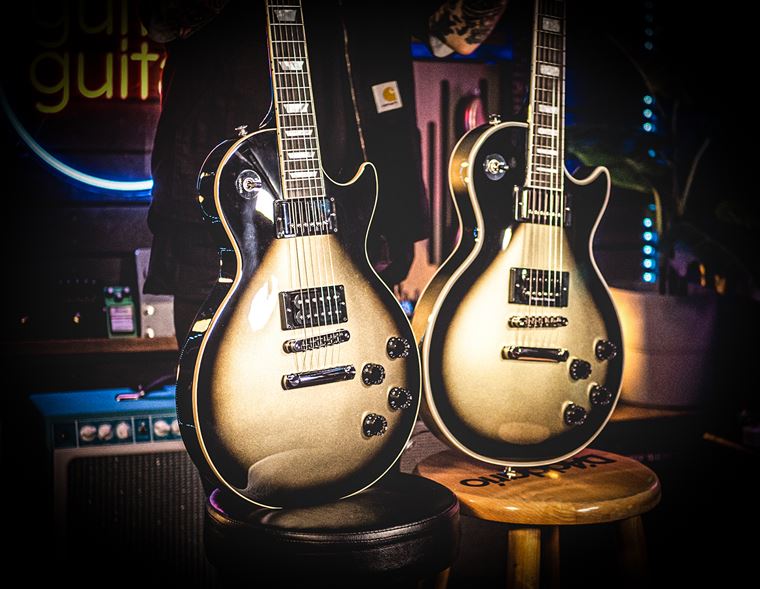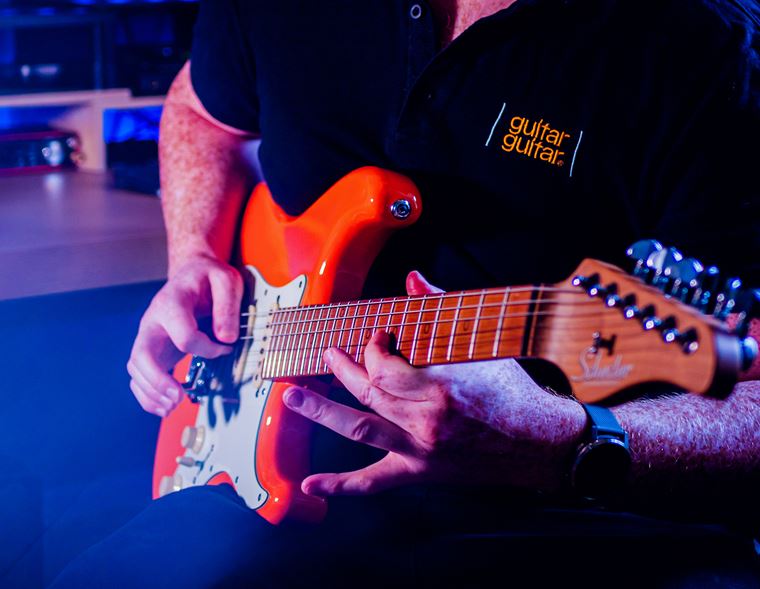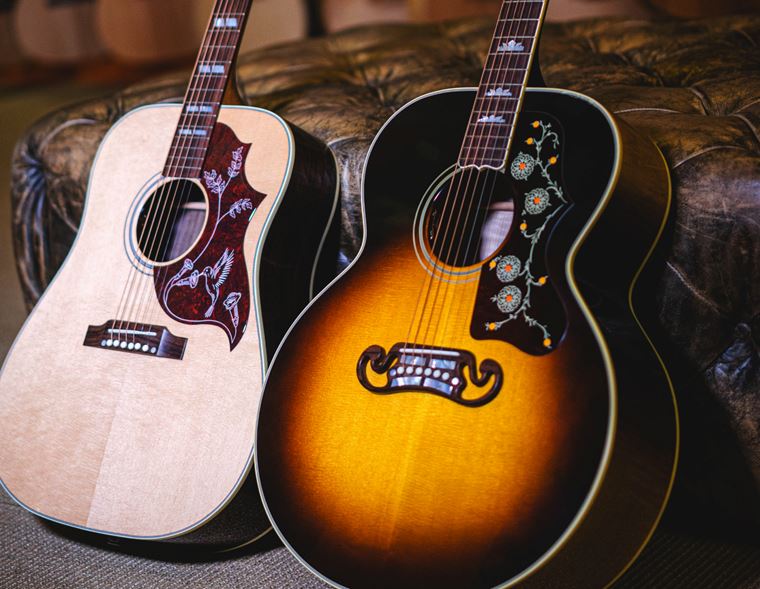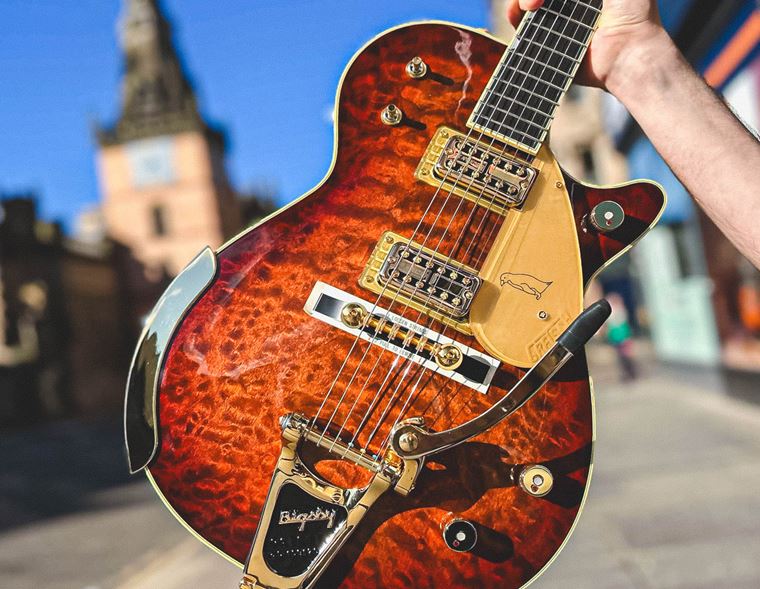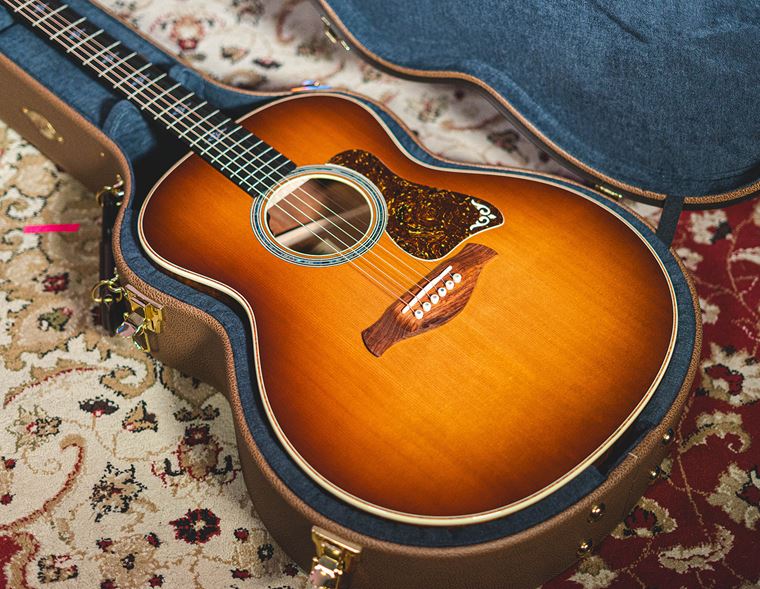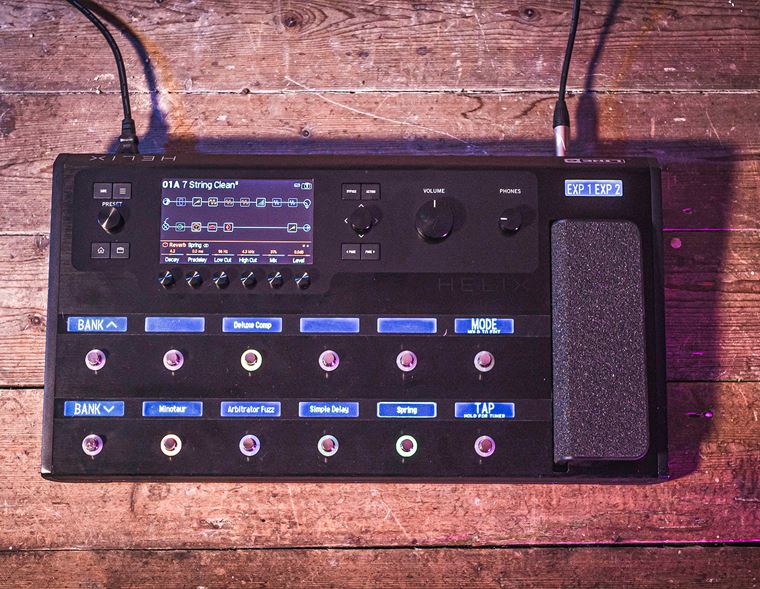How To Get Better At Guitar: 5 Easy Steps
Guitar playing is a lifestyle for all of us and improving on the instrument is a never-ending pursuit of greatness, a road that really has no end! In the early years of playing, we make leaps and bounds as we soak in new techniques and buzz along with the excitement of being able to execute more and more demanding guitar parts. It’s all about satisfaction, after all and those giant steps are barely noticed at the time.
But sooner or later, there comes a period when you plateau. You’ve successfully conquered all of the major parts that you’ve always wanted to play but you feel like you are now going through the motions a little each time you pick up your guitar.
Or, maybe you are trying and trying to make progress but are stuck in a rut. Where do you go? Well, we’ve been there ourselves and we have a couple of ideas that may breathe some much-appreciated life into those guitar strings! Read on and see if any of these appeal to you. If they do, give them a spirited shot! Exciting things lie just around the corner!
Contents
- Play Clean
- Use your pinky
- Change up your vibrato
- Try new genres and listen to other instruments
- Sit down and learn something difficult
1. Play Clean
You may have heard people saying this before but it stands as the ultimate baring of your technique: play your electric guitar with no overdrive, no ambience and no compression. You now have nowhere to hide: every note you play is that much more open to scrutiny. It’s an unnerving experience if you aren’t used to it.
What you will instantly notice is how much your playing habits change to accommodate the unaffected clean tone: heavy rhythm players, for example, will find that their chugging Djent palm mutes are now rendered ineffective! Guitarists who like to sculpt sounds with loads of fuzz and delay will now have to rely on those two old-fashioned notions of rhythm and melody. Shredders will learn where their picking is uneven, where their legato is lacking strength and how much of their sweeps are bluffed-out under distorted noise. Let’s face it: if you can efficiently and accurately sweep pick with a clean, uncompressed tone, well you can just flat out do it! Subject is covered! On the other hand, fluffed notes will not breeze by unnoticed in a frenzied flurry of distorted madness: they will jump out of that clean sound and make themselves very obviously known!
Playing clean guitar often results in more inventive and original playing since you are less inclined to batter through your usual bag of tricks yet again with the same old comfortable sounds that are really sonic crutches! If you use digital modelling, even reading the name of presets can influence and determine what you do with your guitar so it is good to get out of that headspace.
If you have some skill behind you on the instrument, there are few things in life as pleasurable as playing a nice electric guitar straight into a small, clean tube combo. We’ll allow you a little reverb this time. Make sure you get a phone or a handheld recorder nearby though because the song ideas will be flying!

2. Use your pinky
There are so many pieces of music out there that don’t require much more than two fingers to play from start to finish but we definitely advocate the notion of stretching that little digit out and getting some extra reach out of your left hand! It’s useful for monumental shred vibes of course but there’s much more to it than that: picked, chiming arpeggios can be more musical and piano-like if you have a bigger stretch: it makes your playing more colourful and interesting, as well as original. Not only that, if you play (or practice playing) slide guitar then putting your slide on your middle or ring finger frees up at least your pinky to grab at notes for trills and hammer-ons. Your pinky finger is a real musical asset just waiting to be put into practice!
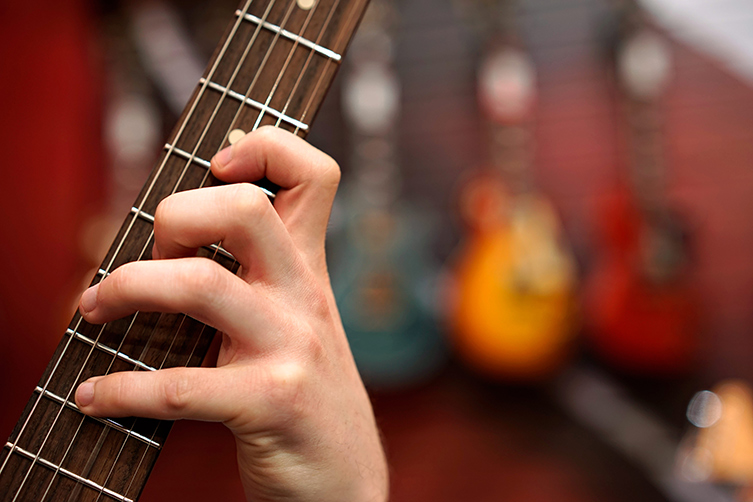
3. Change up your vibrato
It’s time to add to your repertoire of vibrato techniques. What do you mean, you only have one way of doing it? No wonder you’ve hit a brick wall in your playing! Let’s shake things up a little. Okay, so we assume if you are a lead player, your vibrato is going to be the up/down Eric Clapton, Zakk Wylde style. It sounds cool, it’s expressive and it makes you look like a pro. Fair enough but it’s also pretty lazy: why not try classical vibrato? Imagine you are playing a violin or cello: you have no frets so you can move your fretting finger sideways, left to right. This works perfectly well on a guitar too (the frets actually naturally stop you from going out of tune) so give it a try and you will experience a completely different sound: more controlled, more subtle but still full of emotion.
Once you’ve got this dealt with, try applying this vibrato to groups of fretted notes and then entire barre chords! Sounds a bit much? Not at all, try it! People do this with whammy bars all the time and it sounds a little sickly to our ears. This method is much more expressive.
After you’ve mastered this, it is time for the ultimate, Zen-Master technique, beloved of shred-titans Steve Vai and Joe Satriani: the circular vibrato. Yes, it’s a little bit of both styles mixed together. Simply move your finger in a small circular motion on your chosen note: that movement will give you a different type of regulation for the classical vibrato and a little of the Clapton/Wylde wide up ’n’ down vibrato to boot. It’s subtle and sounds great.
Add these techniques to your whammy bar vibrato techniques and you’re be extremely fluent in all things vibrato.
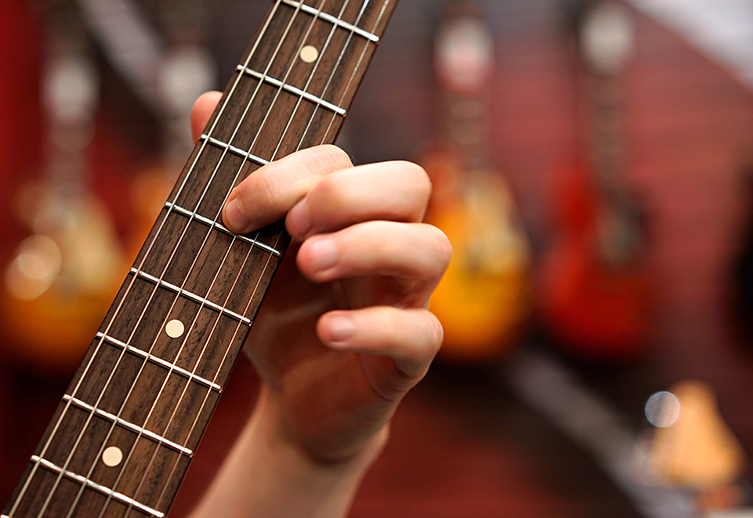
4. Try new genres and listen to other instruments
You like your music and you know what you like. We get it, not all music is born equal and you’ve spent years zeroing in on what really moves you. But unless you stick your head up above the parapet now and then to see what else is out there, some great stuff passes you by and you’ll miss lots of strong and exciting flavours. For example, if you are interested in classic rock, why not go sideways a little and try some Krautrock like Can or Neu? These bands are using a familiar setup but in a significantly different way. Or if you like John Coltrane, how about listening to John Zorn? Death metal fans: go for some folk music. Believe us, the differences are not as far apart as you may think.
Listening for different reasons can also be helpful: you may not love Jazz per se but Jazz drumming can really blow your mind and bring new things to your rhythm playing. Play along! The same is true of different instruments: what gets played naturally on, say, a saxophone will sound strange and unusual when translated on a guitar. What Tori Amos does with her piano chord voicings will boggle your mind when you see what they look (and sound) like on a guitar!
This is true of lead playing and solos too: lots of interesting metal guitarists like Meshuggah’s Fredrik Thordendal get their otherworldy chops from paying close attention to jazz sax players and pianists as well as bassists like Tim Lefebvre and the late, great guitarist Allan Holdsworth. Lee Renaldo from New York noiseniks Sonic Youth is a great fan of Pat Metheny, who to be fair is still a guitarist but to be even fairer is a million miles away from what Sonic Youth do!
Thinking as a musician and not just as a guitarist will open up avenues that you haven’t considered. You may not be able to recreate Hans Zimmer’s full orchestra on one of his film scores but working out and approximating them on your acoustic guitar will result in some amazing new discoveries in melody, harmony, dissonance, chord construction, counterpoint and a whole host of other interesting elements. Use your ears and be patient: it is worth it!

5. Sit down and learn something difficult
When was the last time you actually cracked open a tablature book and sat down for an hour to do some woodshedding? Back in the dawn of your life as a guitarist it may have been a very regular activity (5+ hours every single night? Yeah, us too…) but how often does it happen now? We suggest picking a piece of music that is particularly difficult and complex. Why? Well, we’ve found that by breaking down the part into 4-bar or even 1-bar segments and practicing it hard with a laser precision, you can break through some quite formidable mental and physical walls in your playing. Your hands are going to places they are not used to and your brain is making connections it hasn’t had to before. All of this creates new neural pathways that will, if you practice enough, become a part of your standard vocabulary.
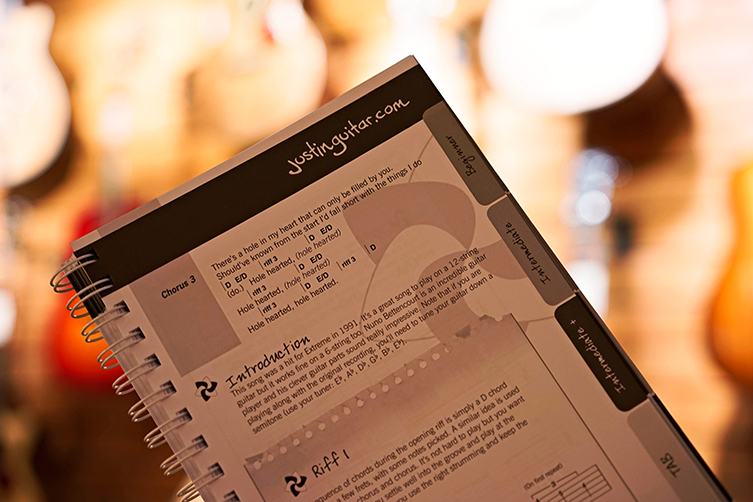
Even your headspace and sense of accomplishment can jump in leaps and bounds when you take something super-difficult, break it down to its individual notes and completely assimilate it. Like a brave warrior, you face the beast head on, defeat it and gain its power. Learn more about the positive effects of playing guitar with our article The Benefits of Playing Guitar.
It’s a hero’s journey, guys, not a stroll in the park. Music is all about fun but in those moments when it begins to drag, realise that the music is telling you to push on: you must pick a battle and fight it until you stand victorious! We are here for you every step of the way: we are all fighting the good fight so let’s break through those walls and enjoy some sublime musical moments!


